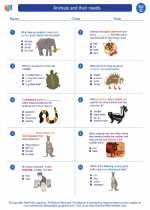Pan Troglodytes - Chimpanzees
Chimpanzees, scientifically known as Pan troglodytes, are one of the two species of apes native to Africa. They are highly intelligent and share about 98% of their DNA with humans. Here is a study guide to learn more about these fascinating creatures.
Physical Characteristics
Chimpanzees have long, black hair and pinkish to black skin. They have long arms, short legs, and opposable thumbs, which help them grasp objects and use tools. Adult males are larger and more robust than females, and they have a distinctive sagittal crest on top of their skulls.
Habitat and Distribution
Chimpanzees are found in the tropical forests and savannas of Western and Central Africa. They live in diverse habitats, including rainforests, woodlands, and grasslands.
Social Structure
Chimpanzees live in communities that consist of multiple family groups. They form complex social hierarchies and engage in cooperative behaviors, such as hunting and grooming. Communication among chimpanzees involves vocalizations, gestures, and facial expressions.
Diet and Hunting
Chimpanzees are omnivores, and their diet consists of fruits, leaves, seeds, and insects. They are also known to hunt and consume small mammals like monkeys and even other chimpanzees in some cases.
Conservation Status
Chimpanzees are currently listed as endangered due to habitat loss, hunting, and disease. Conservation efforts are underway to protect their habitats and combat illegal trafficking of chimpanzees.
Studying Pan Troglodytes provides an insight into the behavior, intelligence, and social dynamics of our closest living relatives in the animal kingdom.
.◂Science Worksheets and Study Guides Third Grade. Animals and their needs

 Worksheet/Answer key
Worksheet/Answer key
 Worksheet/Answer key
Worksheet/Answer key
 Worksheet/Answer key
Worksheet/Answer key
 Vocabulary/Answer key
Vocabulary/Answer key
